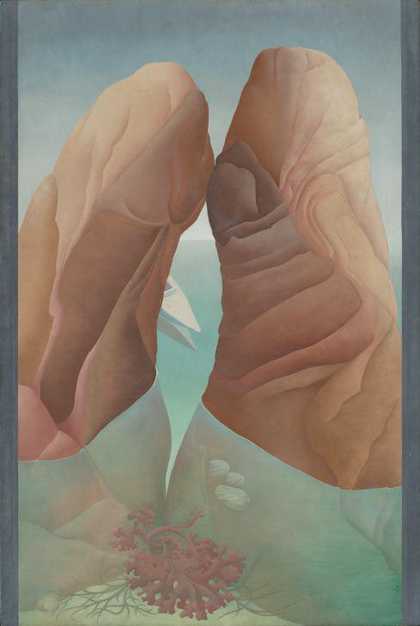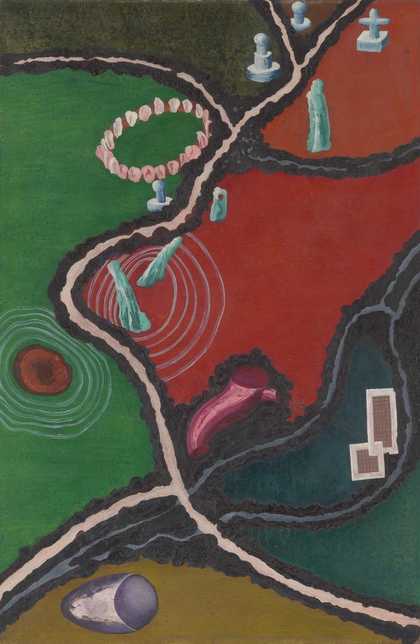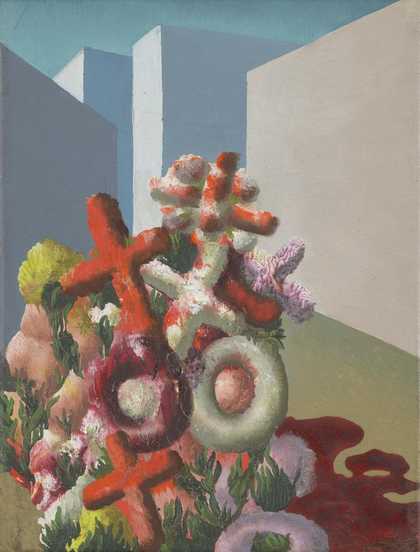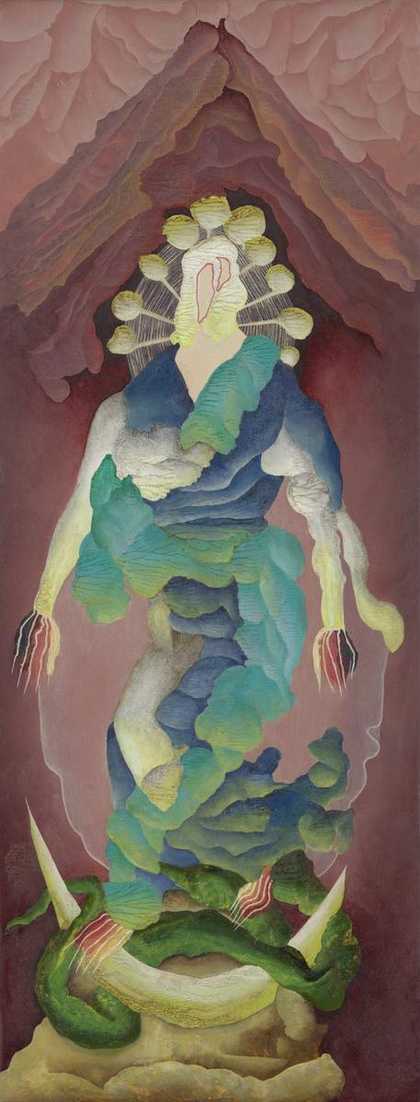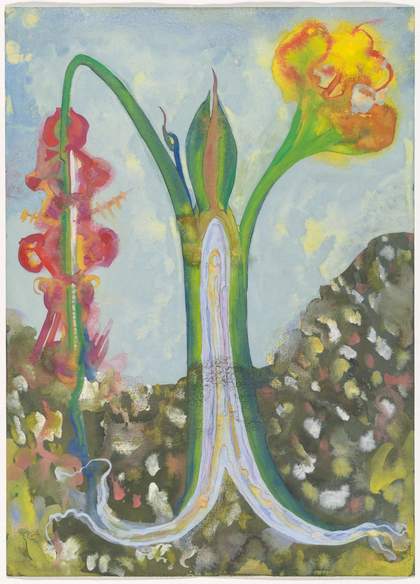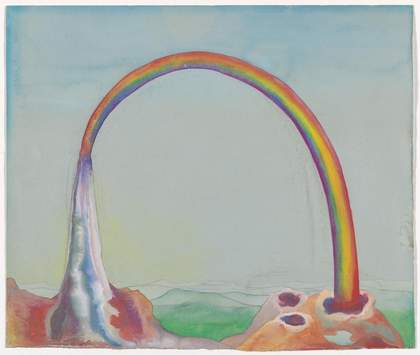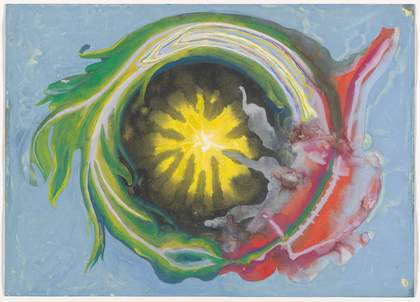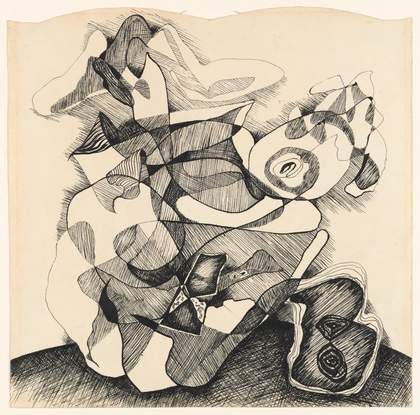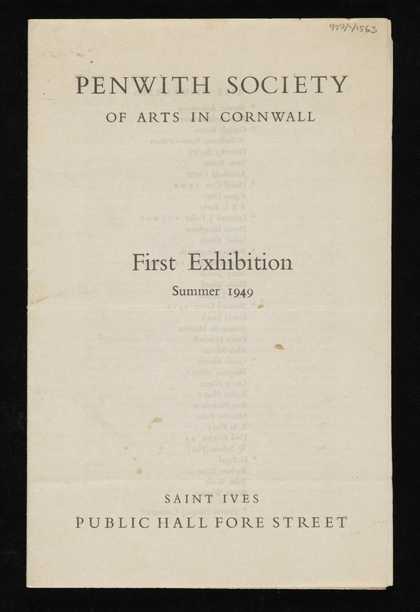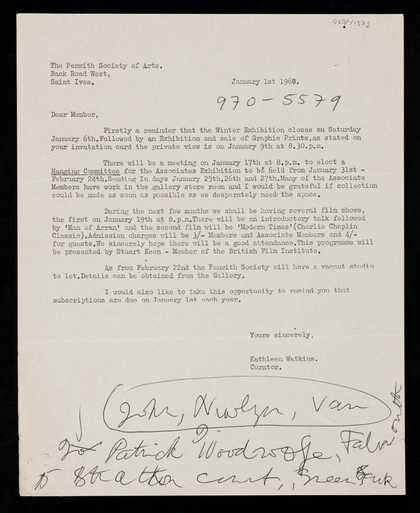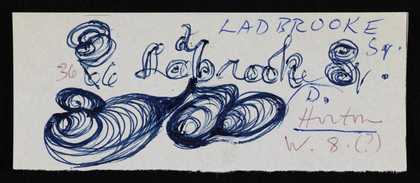Library and Archive Reading Rooms
View by AppointmentArtist biography
Ithell COLQUHOUN 1906-1988
The daughter of a civil servant in India, Margaret Ithell Colquhoun was born in Shillong, Assam on 9 October 1906, but was soon returned to England. She studied at Cheltenham Art School (1925-7) and the Slade School of Art (1927-31), where her Judith Showing the Head of Holofernes (present whereabouts unknown) won the Summer Composition Prize (1929) and was shown at the Royal Academy (1931). Large scale classical or biblical figure compositions prevailed in her work and she remained a member of the Society of Mural Painters into the 1940s. While still at the Slade she began to be interested in esoteric literature and occult sects. In 1931-3 Colquhoun submitted for the British School at Rome Scholarship, but also took a studio in Paris, where she was a neighbour of Paule Vézelay and became aware of Surrealism. She travelled to Greece (1933), Tenerife (1936) and Corsica (1937-8), and held two solo exhibitions in 1936 (Cheltenham Art Gallery and Fine Art Society, London), which included botanical watercolours on silk.
Following the London International Exhibition of Surrealism (New Burlington Galleries, July, 1936), Colquhoun exaggerated the anthropomorphic qualities of her botanical works in line with Salvador Dalí's illusionisticpaintings. She contributed to the Surrealist London Bulletin and joined the movement in 1939, sharing an exhibition with Roland Penrose (Mayor Gallery, June 1939). Shortly after, she met the Surrealists' leader André Breton in Paris just as 'automatic' painting techniques were being modified by the 'psychological morphologies' of Matta and Gordon Onslow-Ford. Abbreviating this term to 'psychomorphologies', Colquhoun made her own contribution to the capturing of psychic space in painting. This automatism characterised her work for twenty-five years, and resulted in two theoretical texts, 'The Mantic Stain' (Enquiry, Oct. 1949) and 'Children of the Mantic Sun' (Athena, 1951). Despite these parallels, Colquhoun broke with Surrealism in 1940 rather than sacrifice her interest in the occult. The break deepened with her marriage to Toni del Renzio in 1942, whose polemics split the British Surrealist group; they were acrimoniously divorced in 1947.
Colquhoun moved to Cornwall in the late 1940s, where her interest in automatism and the esoteric became combined. She was an acknowledged authority on the occult, and her writing ranged from contributions to such periodicals as Prediction to Surrealist texts gathered as The Goose of Hermogenes (1961). She exhibited with the London Group and at the Leicester Galleries, and with the Women's International Art Club in the 1950s and 1960s. Renewed interest in British Surrealism led to a number of retrospectives in the 1970s. She died on 11 April 1988.
Bibliography:
Ithell Colquhoun: Surrealism, Paintings, Drawings, Collages 1936-76, exh. cat., Newlyn-Orion Galleries, Penzance 1976
Ithell Colquhoun: Paintings and Drawings 1930-40, exh. cat., Parkin Gallery, London 1977
Whitney Chadwick, Women Artists and the Surrealist Movement, London 1985
Matthew Gale
October 1997
Wikipedia entry
Ithell Colquhoun ( 9 October 1906 – 11 April 1988) was a British painter, occultist, poet and author. Stylistically her artwork was affiliated with Surrealism. In the early 1930s she met André Breton in Paris, and later started working with Surrealist automatism techniques in her writing and painting. In the late 1930s, Colquhoun was part of the British Surrealist Group before being expelled because she refused to renounce her association with occult groups, including the Ordo Templi Orientis and the Fellowship of Isis. Despite her break with the movement, Colquhoun was a lifelong adherent to Surrealism and its automatic techniques.
Colquhoun was born in Shillong in British India, but brought up in the United Kingdom. After studying at Cheltenham Ladies College and the Slade School of Art, she lived briefly in Paris before moving back to London. She spent the latter part of her life in Cornwall, where she died in 1988.
This biography is from Wikipedia under an Attribution-ShareAlike Creative Commons License. Spotted a problem? Let us know.
Read full Wikipedia entry

